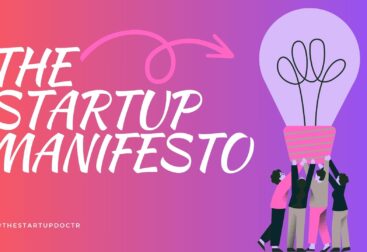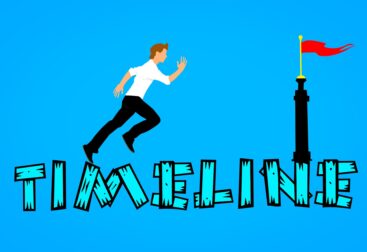In the dynamic world of product management, revamping a product roadmap is a common yet complex task. It involves not just reshaping the path of the product but also ensuring that the entire team remains motivated and cohesive throughout the process. High team morale is crucial for maintaining productivity, fostering creativity, and achieving success. Here’s how to keep team morale high during a product roadmap revamp, with a focus on practical strategies and real-world examples.
1. Transparency First
Transparency is the cornerstone of trust within a team. When revamping the product roadmap, being open about the reasons, goals, and processes is essential. It’s not just about sharing information but doing so in a way that everyone understands the bigger picture.
Example: Imagine you are leading a team at a tech startup where the initial product roadmap was heavily focused on rapid feature releases. However, after receiving feedback from early adopters, it’s clear that the product needs to pivot towards improving user experience. Instead of making these changes in isolation, you decide to hold a series of town hall meetings. In these meetings, you explain the user feedback, the data backing the need for a pivot, and the long-term vision. You encourage questions and address concerns transparently. This open communication helps the team understand the rationale behind the pivot and align their efforts with the new direction.
Theory: According to the Johari Window model, transparency increases the ‘open area’ in interpersonal communication, fostering a culture of trust and reducing workplace anxiety. When team members understand the rationale behind changes, they are more likely to support and engage with the new direction. Research by Harvard Business School also supports this, showing that transparent leadership leads to higher employee morale and engagement.
2. Involve the Team
Involving the team in the roadmap revamp process not only democratizes decision-making but also instils a sense of ownership and accountability. When team members feel their voices are heard, their commitment to the project strengthens.
Example: Consider a scenario where a SaaS company is updating its product roadmap to include AI-driven features. Instead of the product manager making all the decisions, the team is divided into cross-functional groups, each responsible for researching and presenting on different aspects of AI integration. Regular workshops are held where these groups share insights and brainstorm together. This inclusive approach not only brings diverse perspectives to the table but also ensures that everyone feels their expertise is valued.
Case Study: At Atlassian, the software company behind Jira and Confluence, involving the team in decision-making is a core part of their culture. During a major product pivot, the company held “ShipIt” days where teams were encouraged to develop and present their ideas for the new direction. This participative approach resulted in innovative solutions and high team morale, proving the effectiveness of involving the team in strategic decisions.
Theory: Participative leadership theories emphasize the importance of involving team members in decision-making processes. This approach not only leverages the diverse expertise within the team but also enhances motivation and satisfaction by making everyone feel valued and included. Studies show that participative decision-making leads to higher levels of employee satisfaction and performance.
3. Set Clear Goals
Ambiguity can be a major demotivator. Clear, achievable goals provide direction and purpose. When revamping the roadmap, setting specific, measurable, achievable, relevant, and time-bound (SMART) goals is crucial.
Example: Suppose you’re managing the product development for a mobile banking app. The new roadmap includes launching a series of microservices to enhance user personalization. Instead of a vague objective like “improve user experience,” you set clear goals: “Integrate AI-based personalized financial advice by Q3” and “Reduce transaction processing time by 20% by year-end.” Each goal has defined metrics and timelines. This clarity helps the team understand what success looks like and how to achieve it.
Case Study: Google’s OKR (Objectives and Key Results) framework is a prime example of effective goal-setting. When Google set out to revamp its advertising platform, the team established clear OKRs that aligned with the overall company strategy. These OKRs were communicated across the organization, ensuring everyone was working towards the same objectives. This alignment and clarity were instrumental in the successful rollout of the revamped platform.
Theory: Goal-setting theory, pioneered by Edwin Locke, suggests that specific and challenging goals, along with appropriate feedback, lead to higher performance. Clear goals help teams focus their efforts, align their activities, and measure their progress, all of which boost morale. Research shows that well-defined goals can improve employee performance by up to 25%.
4. Offer Support
During times of change, providing adequate support can make a significant difference in maintaining morale. This support can be in the form of resources, training, or simply being available to address concerns.
Example: Picture a healthcare startup transitioning to a new tech stack as part of its product roadmap revamp. Recognizing the challenge, the company invests in training sessions for the new technologies, offers access to online courses, and brings in experts for hands-on workshops. Additionally, regular check-ins are established to help team members voice any issues and seek guidance. This proactive support ensures that the team feels equipped to handle the changes.
Case Study: When Adobe transitioned from a traditional software licensing model to a cloud-based subscription service, the company recognized the need for extensive support. Adobe provided comprehensive training programs and established a robust support system for its employees. This support was critical in ensuring a smooth transition and maintaining high morale during the significant shift.
Theory: The Job Demands-Resources (JD-R) model suggests that job resources (like support and training) help to buffer the impact of job demands (like new technologies or processes) on stress. By providing the necessary resources, you can reduce stress and increase engagement, thereby maintaining high morale. Studies indicate that employees who receive adequate support are more likely to be engaged and less likely to experience burnout.
5. Maintain Flexibility
Flexibility is crucial when navigating through a roadmap revamp. The ability to adapt and pivot when necessary not only ensures better outcomes but also reduces frustration within the team.
Example: Let’s say your e-commerce platform is expanding to international markets, and the new roadmap involves integrating multiple payment gateways. Midway through the project, a new regulation impacts one of your target regions. Instead of rigidly sticking to the initial plan, you hold a strategy meeting to reassess and adapt the roadmap. The team feels valued as their inputs are considered in the new strategy. This flexibility prevents potential roadblocks and keeps the project on track.
Case Study: Spotify’s approach to agile development showcases the importance of flexibility. Known for their “Squad” model, Spotify’s teams are given the autonomy to pivot and adapt their goals based on real-time feedback and market changes. This flexibility has enabled Spotify to continuously innovate and stay ahead in the competitive music streaming industry.
Theory: Agile methodologies emphasize the importance of flexibility and iterative progress. By maintaining flexibility, teams can quickly respond to changes and challenges, reducing stress and fostering a sense of control and participation. Research in agile practices indicates that flexible teams are more resilient and better able to handle uncertainty.
6. Celebrate Progress
Recognizing and celebrating progress, no matter how small, can have a tremendous impact on team morale. Celebrations create a positive work environment and encourage continued effort and commitment.
Example: In a scenario where a FinTech company is rolling out incremental updates to their app as part of a roadmap revamp, each successful milestone, such as the completion of a new feature or a significant bug fix, is celebrated. These celebrations range from team shout-outs in meetings to small office parties or even digital badges and rewards. This recognition boosts team morale and reinforces the value of their contributions.
Case Study: Atlassian’s “ShipIt” days are a perfect example of celebrating progress. These quarterly events allow teams to work on innovative projects outside their regular tasks. Successful projects are celebrated with presentations and awards, fostering a sense of achievement and motivating teams to continue pushing the envelope.
Theory: Positive reinforcement, as described in behavioural psychology, can increase the likelihood of a behaviour being repeated. Celebrating progress reinforces the desired behaviours and outcomes, keeping the team motivated and engaged. Studies show that recognition and rewards significantly enhance employee satisfaction and productivity.
7. Here’s What Else to Consider
While the above strategies are fundamental, there are additional aspects to consider for maintaining high team morale during a roadmap revamp:
Communication Channels: Establishing effective communication channels is vital. Tools like Slack, Trello, or Asana can facilitate transparent and efficient communication, ensuring everyone is on the same page. Regular updates and open forums for discussion help keep everyone informed and engaged.
Feedback Loops: Create regular feedback loops where team members can express their thoughts and suggestions. This not only helps in identifying and addressing issues early but also fosters a culture of continuous improvement. Implementing tools for anonymous feedback can also ensure that all voices are heard.
Mental Health and Well-being: Pay attention to the mental health and well-being of your team. Encourage a healthy work-life balance, offer mental health resources, and be vigilant about signs of burnout. Initiatives like flexible work hours, wellness programs, and access to counselling services can make a big difference.
Leadership Style: Adopt a transformational leadership style that inspires and motivates the team through vision, encouragement, and a shared sense of purpose. Transformational leaders create a positive work environment by fostering collaboration, providing mentorship, and recognizing individual contributions.
Conflict Resolution: Address conflicts promptly and constructively. Use conflict resolution strategies to ensure that disagreements do not escalate and affect team morale. Training in conflict resolution and effective communication can equip team members with the skills to
handle conflicts professionally.
Example: In a large enterprise software company, as the product roadmap is revamped to include a significant shift towards cloud-based solutions, regular mental health check-ins are instituted. The company partners with mental health professionals to provide workshops and resources, and managers are trained to recognize and address signs of stress and burnout. This proactive approach helps in maintaining a healthy and motivated workforce.
Case Study: Salesforce, known for its strong company culture, places a high emphasis on employee well-being. During their transition to new product strategies, Salesforce introduced wellness programs and mental health resources to support their employees. This focus on well-being contributed to maintaining high morale and productivity during the transition.
Theory: The Leader-Member Exchange (LMX) theory highlights the importance of strong leader-follower relationships in fostering a positive work environment. High-quality LMX relationships lead to higher job satisfaction, commitment, and overall team morale. Research shows that employees who have good relationships with their leaders are more engaged and perform better.
Conclusion
Revamping a product roadmap is a complex process that requires careful management of both the technical and human aspects. By prioritizing transparency, involving the team, setting clear goals, offering support, maintaining flexibility, and celebrating progress, you can keep team morale high and ensure a successful transition. Remember, a motivated and engaged team is the driving force behind any successful product development effort.
Drawing from real-world scenarios and established theories, these strategies provide a comprehensive approach to navigating the challenges of a roadmap revamp while keeping your team inspired and committed. In the end, the success of a product roadmap revamp lies not just in the new direction it sets, but in the strength and morale of the team driving it forward.












